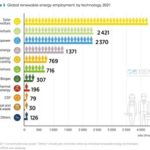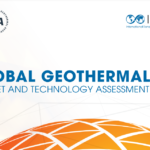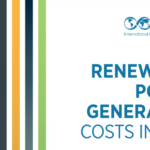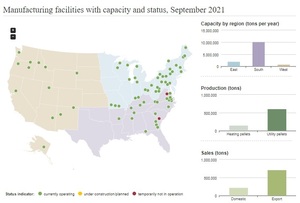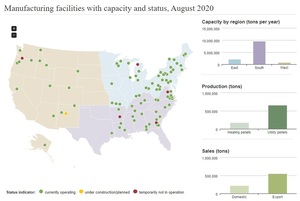IRENA: Global bioenergy jobs at 3.52 million in 2020
Energy Disrupter
ADVERTISEMENT
Bioenergy accounted for approximately 3.52 million of the 12 million global renewable energy jobs in 2020, according to an annual jobs report released by the International Renewable Energy Agency (IRENA) in late October. Total bioenergy jobs were down slightly when compared to the 3.58 million reported for 2019.
Liquid biofuels accounted for 2.411 million jobs in 2020. Solid biomass, biogas, and municipal and industrial waste accounted for 765,000, 339,000, and 39,000 jobs, respectively.
The report notes that global biofuels production fell 6 percent last year, from 161 billion liters (42.53 billion gallons) in 2019 to 151 billion gallons in 2020. The decrease is attributed to market impacts associated with the COVID-19 pandemic. Ethanol output was down approximately 8 percent, while biodiesel production was relatively steady.
The U.S. and Brazil remained the world’s dominant ethanol producers last year, with a combined 83 percent share of production. The U.S., Indonesia and Brazil produced a combined 45 percent of biodiesel in 2020. The European Union accounted for 31 percent of biodiesel production.
Latin America accounted for 44.4 percent of global biofuel fuels jobs last year. Asia accounted for 33.6 percent, while North America accounted for 11.8 percent and Europe accounted for 10 percent. The relatively low labor levels in the U.S. and Europe are primarily attributed to highly mechanized agricultural operations in both regions.
According to the report, 368,000 of the world’s 765,000 solid biomass jobs are located in the European Union. An additional 188,000 jobs are located in China, with 58,000 jobs in India and 44,500 jobs in the U.S. In the U.S., 32,442 jobs were in wood biomass fuels, with 12,039 jobs in biomass power.
China accounted for 145,000 of the 339,000 global biogas jobs last year. India accounted for an estimated 85,000 biogas jobs, while 76,000 biogas jobs were located in the European Union. The number of biogas job in the U.S. was not available.
A full copy of the report can be downloaded from the IRENA website.


